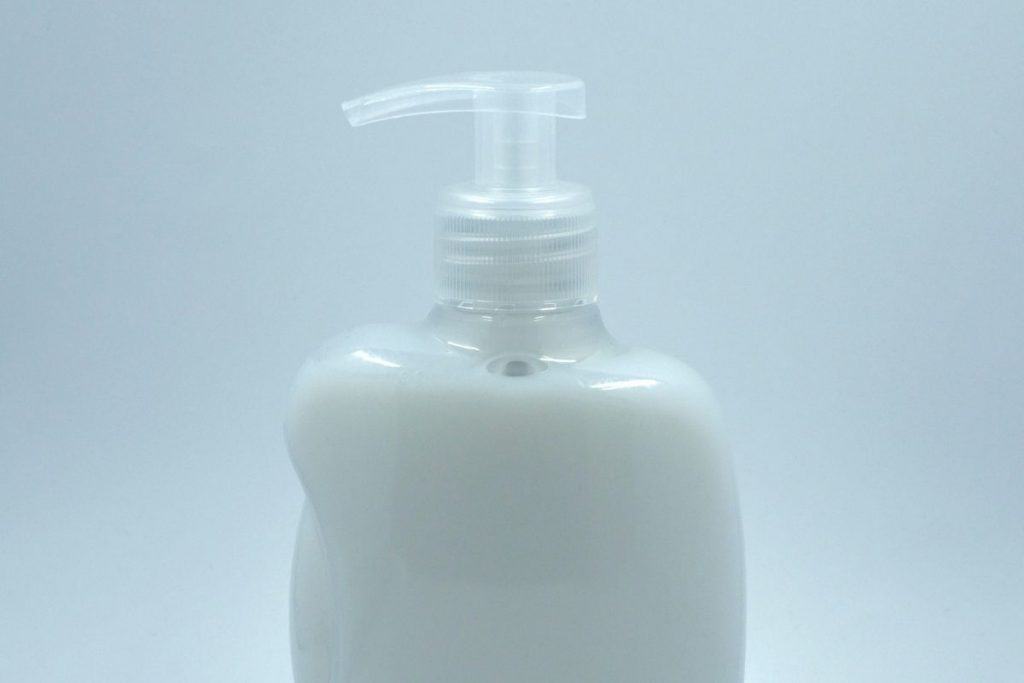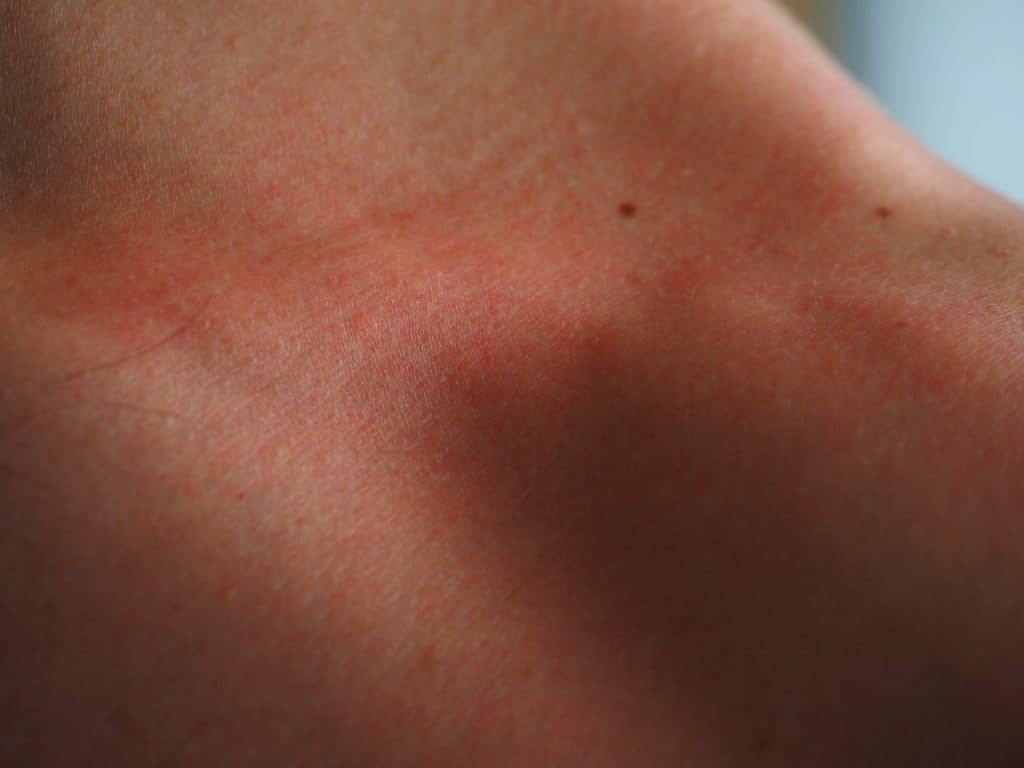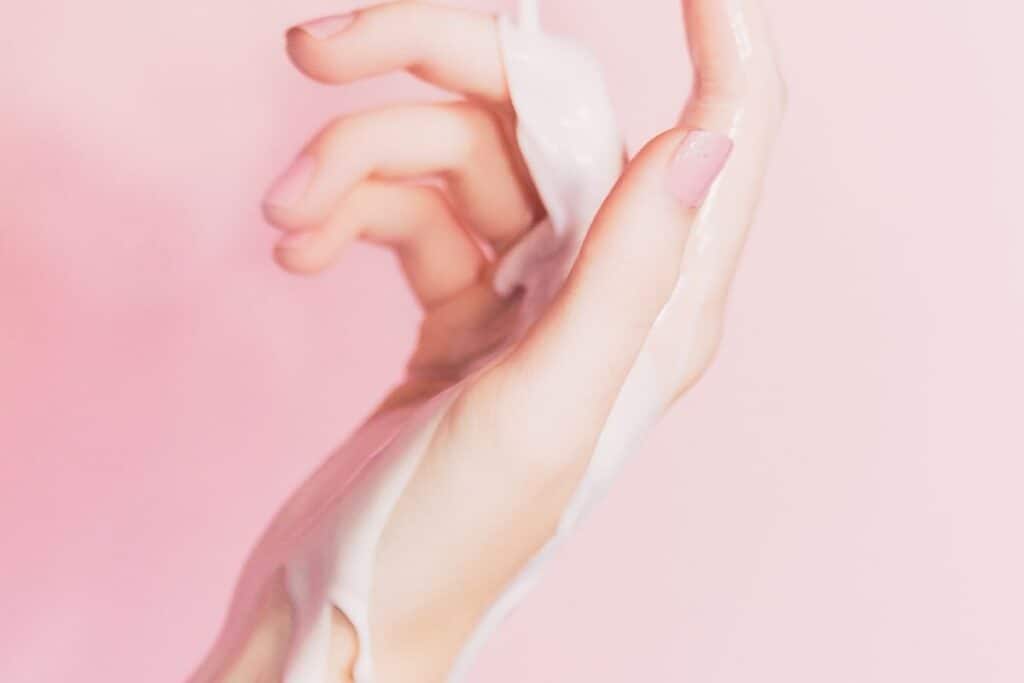One of the most common problems soap makers encounter when making liquid soap for the first time is ending up with a milky or cloudy batch, and most of the time, they don’t know why it even happened. That’s because making liquid soap is not only very different in comparison to making bar soaps, but It’s also much trickier.
Whether you’re seeking a fun hobby, saving money, or pursuing a new business venture, our step-by-step guide makes crafting spa products enjoyable and easy, perfect for hobbies, saving money, or starting a business. Explore 126+ recipes, from soaps to lotions, with our beginner-friendly Quick Start Guide. Ditch store-bought products with unknown chemicals and embrace personalized, high-quality creations that cater to allergies and sensitivities using The Handcrafter’s Companion.
Liquid soap gets milky and cloudy when the lye amount is incorrect. This causes the fatty acids not to saponify entirely. Another cause is the oil and water layers getting separated, which happens due to too much oil. Finally, too much liquid within the formulation will also lead to a cloudy and milky consistency.
There are actually many more causes for your soap to get milky or cloudy, and I’ve tried to cover most of them in this article. But I am sure that there might be some I’ve missed. This indicates again that making liquid soap is trickier, and therefore, the chances are higher to fail. n
Why Your Liquid Soap Is Cloudy

The most common problem every has to encounter is their liquid soap’s cloudy appearance. But before we know the actual reason for the hazy appearance of liquid soaps, we must know about the essential liquid soap-making process.
Liquid soap can be made using several methods, but most liquid soap makers prefer a hot process method. The soap paste is nearly similar to hot process bar soap in its pre-hardening phase.
Liquid soaps and bar soap differ from each other in their chemical formulation. Bar soap lye is made from sodium hydroxide (NaOH), while the lye for the liquid soap is made from potassium hydroxide (KOH).
Once the paste is prepared, water or some other liquid is added as a base, and then you can add any coloring and scents. Several reasons can make your liquid soap appear cloudy.
Adding Fragrance Oils to High Superfat Soap Solution:
The maximum recommended super-fat amount is 3%. However, this is too much if you are using a scent. If you add fragrance oils or essential oils to soap with high super fast, it will separate and give your liquid soap an undesirable cloudy appearance.
Adding Saturated Fats, Butters, and Waxes:
Oils high in saturated fatty acids such as tallow, shea butter and cocoa butter usually cause cloudiness in liquid soap. Lards and other animal fats are solid at room temperature, and their particles remain suspended in the soap mixture. Waxes and butter do not saponify and give a cloudy appearance to the soap.
Amount of Lye:
When the amount of lye is not exact, the fatty acids will not saponify completely. This incomplete saponification gives a milky and cloudy appearance to the liquid soap. It may also cause oil and water layers to separate. However, it is safe to use 10% extra lye in liquid soap, a common practice in liquid soap making.
Superfast and Potassium Hydroxide (KOH) Concentration:
Using a higher amount of superfast than the recommended amounts causes cloudiness in soaps. For example, the purity of KOH should be assumed 90% instead of 100%. If you are using premade % by weight solution or lab grade solution, the KOH may have higher purity.
Using Tap Water Instead of Distilled Water:
Some people try to use tap water in their homemade liquid soap solutions. Tap water contains a considerable amount of mineral ions such as calcium, iron, and magnesium. If you use hard water in making soap, the minerals in the water will turn the soap into an opalescent mixture that gives a very unpleasant appearance.
Is It Ok To Use Cloudy Liquid Soap?

If your liquid soap has turned cloudy, you can still use it. Using a gray-appearing liquid soap will not harm your skin if it is not too high on pH, and it happens only in lye-heavy soaps. But if this cloudiness is due to the partial saponification of fats, the soap will remain completely safe for use.
Then why is cloudy liquid soap an issue? If you are making soaps for a business purpose and your customers, a dirty soap would probably not sell. No one wants to buy a liquid soap that appears curdled or cloudy.
Liquid soaps sell on two bases: appearance and fragrance. No one will leather soap before purchasing it. Customers judge the liquid soaps based on clarity and their aroma. A soap batch that has a cloudy appearance would probably become a loss for its manufacturer.
Therefore if you are crating liquid soaps for others, maintaining clarity should be your top priority; otherwise, the soap will not sell.
How Do You Clarify Liquid Soap?
Most of the soaps produced commercially are surfactant-based products instead of real soaps. There are several chemicals added in a carefully controlled manner, and therefore there are negligible chances of soap getting clouded.
Homemade Liquid soaps can be made by using several recipes. The soap makers are often experimenting with various ingredients to improve their soap’s performance. So every recipe has its different outcome. You must know the actual culprit responsible for the cloudy appearance of your liquid soap so that you can clarify the soap and prevent wastage.
If a cloudy liquid soap uses extra super fat, instead of pouring fatty part off, you can add a solubilizer like PS80. First, test the PS80 to a small portion of the soap to check its effectiveness. This is a reliable way to keep the extra fat from separating and keeps the liquid soap mixture homogenized if you use extra super fat at 6%.
If the cloudiness is caused by hard water, it can be cleared using a chelating agent like tetrasodium EDTA. It will chelate the hard water scum and remove the cloudiness.
Using coconut oil is an excellent choice for liquid soap making. Coconut oil contains lauric acid, which makes good leather, is very soluble, and has a long shelf life. Coconut oil is very soluble, and it saponifies quickly, resulting in a crystal clear liquid soap with great leathering capacity.
Why Your Liquid Soap Is Milky
Several reasons may turn your liquid soap into a milky appearance. Some of these changes occur while you are making the soap. They are due to the mistakes in formulations, and in this case, they can be corrected. But if these changes occur with time, they will deteriorate the product and make it unusable.
Check your Fragrance:
If you desire to add fragrance to your liquid soap, remember that various essential oils and fragrance oils react differently when added to the soap paste. Before adding a bouquet to the runny soap batch, test the fragrance oil in a small sample.
Then keep this mixture for at least 24 hours to check the results. If the fragrance turns the soap solution into a cloudy, separated, very thick or thin consistency, then do not add it to your liquid soap batch.
Using Glycerin In Soap Formulation:
Replacing glycerin for distilled water in lye may cause some long-term stability issues. The soap solution may turn milky and have a separated appearance with time. This gives an undesirable look to your liquid soap while it sits waiting to be shipped. Therefore using Glycerin becomes useless and waste for a business.
Microbial Contamination:
If you use any natural ingredients such as fruit nectar or goat milk, you’ll need to be extra vigilant to eliminate the chances of bacterial contamination. These bacteria can stay and multiply in the liquid soap mixture and cause the soap to become milky.
If that happens, your soap won’t be suitable for use anymore. Microbial contamination such as bacteria, yeast, and mold grows even if you use preservatives in the formulation. It is, therefore, best to avoid these types of ingredients that provide a breeding ground to microbes.
Is It Ok To Use Milky Liquid Soap?
Most of the time, soap’s milky appearance is due to microbial growth, incomplete saponification, or excess amount of lye present in the liquid soap.
If the milky appearance is due to microbial growth, the soap may also develop unpleasant smells and may cause skin infections, mainly if used on broken skin. So if you think (or just even suspect) it’s microbial, I’d strongly advise avoiding using it.
Incomplete saponification not only makes the liquid soap feel greasy and sticky, but it also will not leather properly and leave the skin unclean.
An excess amount of lye that is not used makes a higher pH and is not suitable for the skin. It is similarly also not advised to use this soap as it may cause skin irritation.
So, if you see that your soap is cloudy or milky, you shoulnd’t take the risk in both of the cases discussed above is soap not suitable for usage. It not only not give the desired results, but it may also cause severe reactions like an infection or allergies.
How do I make liquid soap clear?
A liquid soap that turns milky can be fixed by correcting the mistakes in the formulation. Sodium Hydroxide (NaOH) is purer than Potassium Hydroxide (KOH), and it takes more time to break down.
If you accurately measure your ingredients like bar soap, your soap may turn out either super-fatted or lye massive. Both of these problems can be resolved even after you have diluted your liquid soap. Here is the way to confirm this:
How to Check the Soap Paste for Excess Oil:
You can detect excess oil in your soap paste by using this really easy method. Mix a little bit of your prepared paste into distilled water. If it turns out milky, your oils are not saponified completely.
There is nothing to worry about its cloudy appearance. Unsaponified oils can be balanced by adding some dissolved KOH solution. This solution will completely saponify these extra oils.
How to Check the Soap Paste for Excess Lye:
Excess lye in the soap refers to the alkali that does not neutralize during the soap-making process. This can be corrected by adding substances that balance the pH level. Phenolphthalein drops are an easy way to test the soap paste for excess lye. Phenolphthalein drops will turn a pink solution into magenta if its pH is between 8 and 9.8.
Adding dissolved citric acid or stearic acid can neutralize the pH. If the diluted liquid soap does not change color, it is perfect to use.
How to Prevent Having Cloudy or Milky Soap?

To prevent the annoying cloudy or milky appearance of liquid soap, it is necessary to add some ingredients to maintain its pH and other physical and chemical properties. These products make liquid soap shelf-stable and also prevent the growth of microorganisms.
Here are a few things you can do to make sure your next batch of liquid soap does not end up all milky and cloudy.
Using Borax in a Liquid Soap Formulation:
Using borax in your liquid soap will not only lower its pH level but also thickens the soap and acts as a chelator by binding the minerals found in hard water, forming a cloudy layer on the soap surface. Borax is the perfect buffer and stabilizer in liquid soaps.
For example, you can make a 33% borax/water solution and add ¾ oz /pounds of paste to your soap. For this concentration, you have to boil 3 oz of borax and 6 oz of water. You have to cook it until it gets clear; it is ready to use in this condition.
Add in the solution and check the pH. If you want to drop the pH level even further, add 0.25 – 0.5 ounce to the solution. Don’t add too much of it, as it will cloud up your soap. Superfast ingredients can be added after it.
NOTE: Borax can be a potential irritant for people with sensitive or broken skin, old age, and small children.
Adding Citric Acid To the Liquid Soap:
Citric acid is a very good alternative to Borax, it can also be used to neutralize the pH level, and it would not irritate the skin. You’d need to check your soap’s pH level and add the appropriate quantity of citric acid.
Here is how you do it:
For example, using 5 grams of citric acid for each 50 oz paste is a good method. Take a Pyrex measuring cup to weigh citric acid and pour around 1-2 ounces boiling water to dissolve it. Add this solution to your soap mixture. Then add the ingredients and leave it overnight. If the soap still appears cloudy or curdled, gently heat and stir the mixture.
Let the mixture sit for a couple of hours before testing the pH. This recipe is enough to drop the pH by 0.3. Let’s say your soap starting pH was 9.5. It will reduce to 9.2.
NOTE: Too much citric acid can separate your fats and oils from the solution.
Best Oils for Making Liquid Soaps:
Most soap makers use olive oil, castor oil, and coconut oil in their liquid soap formulations. Coconut oil adds a leather boost and helps the soap paste to saponify easily.
Olive oil and castor oil are similarly good choices for liquid soap as they thicken the soap and enhance its moisturizing properties—liquid soaps made with olive oil thicker than those made with coconut oil.
Conclusion
As you enter the world of making liquid soaps, you will find countless recipes and possible variations. Though these recipes promise exciting products with the best results, there may be some ingredients in their formulations that may cause your liquid soap to appear cloudy or milky instantly or in the long term.
Using the right type of fats and oils is crucial to the liquid soap-making process. Fats that do not saponify properly impart a cloudy appearance in soap. Lye formulations need adjustment according to the purity of available Potassium Hydroxide (KOH).
Some other considerations are the use of suitable fragrance oils and using only distilled water for soap making. To avoid undesirable changes in physical and chemical properties, borax and citric acid are added to stabilizers.
When adding natural ingredients, it should be kept in mind that they provide excellent breeding grounds to the microorganisms, and they can be added only with powerful preservatives.
